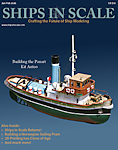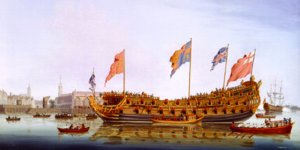based on a conversation in another topic I promissed to make a short review of the book and show you some excerpts of the book, so you get an impression what you get for your money. Therefore I added several photos I made from the book.
The Title:
"The Restoration Warship - design, construction and career of a Third Rate of Charles II´s Navy"
by R. Endsor

The Restoration Warship is a comprehensive history of the Lenox, a 70-gun third rate of Charles II's Navy, illustrated with my own plans, paintings and sketches. Lenox represents the pinnacle of English shipbuilding practice and in many ways typifies all third-rate ships of the period. They were by far the most numerous class of warship in the seventeenth century and formed the backbone of the English fleet. Lenox was ordered as the first of the King's ‘Thirty Ships’ building programme, a series of beautiful and powerful warships that were intended to reflect the glory and majesty of the monarch. Their graceful lines and ornate decoration made these ships ideal subjects for study, drawings of which were made by the famous artists the Van de Veldes, the fathers of the English marine painting genre. Unsurprisingly, the ships remain a source of fascination for historians and ship modellers today. They were constructed at the end of the Anglo-Dutch Wars and midway through Louis XIV's massive expansion programme for the French Navy. I have employed extensive primary research to produce a detailed building and career history of this vessel. Every aspect of Lenox is covered in great detail, from initial design and construction to armament, fitting out and her later career. The book provides a broad picture of the day-to-day workings of Deptford dockyard, including the techniques, trade and tools of the shipwrights, sail-makers and boat builders. It also gives an insight into the workings of naval administration, as well as including social history from the accounts of the people involved with Lenox. Construction of Lenox and her sisters was largely down to Samuel Pepys, the famous diarist and Secretary of the Admiralty, who considered the Thirty Ships programme to be ‘the greatest achievement of my career’.
The book is exceptionally well illustrated with good fold out plans of the ship, deck by deck, and diagrams of every aspect of her fittings.
There are many new drawings of the good quality throughout the book. Of particular interest to model makers (and any enthusiast of this period), are the detailed 1:72nd scale drawings of all decks (top views), side profile, side profile showing decks, body lines and, something I was reading later by another review,
the main draught lines located on the inner face of the book sleeve/jacket - again in 1:72 scale.
There are two fold out sections for the hull and deck views.
The most technical part of the book is the chapter devoted to building Lenox. The author takes the reader through the process as it happens rather than simply recording how the timbers were put together. For non technical people there are lavish and ample illustrations explaining how this was done.
The price asked is not an unreasonable one for such a beautiful volume.
For me this book is realy recommended, especially if you are interested in this period of ship building.
Award:
The Mountbatten Maritime Award for Best Literary Contribution 2010 was held in London on Thursday 28th October at the Institute of Directors, Richard was awarded a Certificate of Merit for the best illustrated book.
Contents:
Foreword and Introduction
Chapter I - Perliamentary Approval (page 9 to 16)
Chapter II - Deptford Dockyard and Timber Supplies ( page 17 to 30)
Chapter III - Building the Lenox (page 31 to 70)
Chapter IV - Carvings and Finishing (page 71 to 76)
Chapter V - Ship´s boats (page 77 to 78)
Chapter VI - s (page 79 to 80)
s (page 79 to 80)
Chapter VII - Launching (page 81 to 99)
Chapter VIII - Shipwright Productivity (page 100 to 114)
Chapter IX - Sails and Rigging (page 115 to 124)
Chapter X - Laid up in Ordinary (page 125 to 146)
Chapter XI - Ordnance (page 147 to 178)
Chapter XII - Service History (page 179 to 224
Appendices, Visual Clossarym Index (page 225 to 256)
Drawings:
The drawings in scale 1:72 are fixed in the book for fold out, they are good, partly very good, but it is not like a detailed planset.
Nevertheless I found out, that R. Endsor is selling additional drawings directly via his web-page, and the in scale 1:48, which is for some modelers maybe more interesting than the 1:72. This is maybe also interesting for an interested modeler........check it out
He is writing:
Due to popular demand, I now supply separate drawings on paper of the 70-gun warship Lenox at a scale of 1/4" to the foot or 1/48, the same scale of the original draughts and most of the surviving Navy Board models. At that scale, the length of the ship from the head to taffrail is 44 inches (112cm).
I supply the following drawings at £10 each plus one-off payment £8 postage within the U.K or $15 each, plus $19 postage for all the plans you order to the USA in a cardboard tube. Payment is most easily made through Paypal. For any other destinations, please contact me for a quote.
http://www.richardendsor.co.uk/home/4539578529
Excerpts from the book:

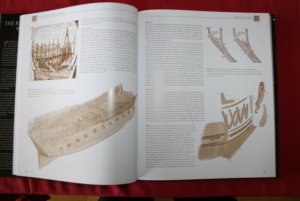
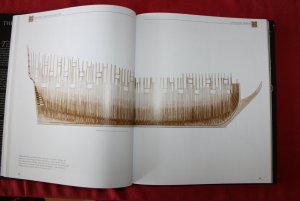

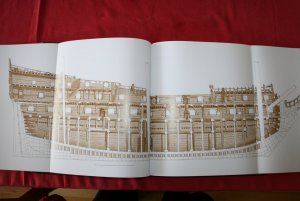





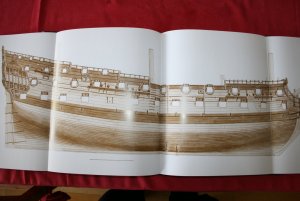

Appendices like "Principle Dimensions", "Scantling list", "Building contract of the Yarmouth", "The building list of the Lenox" and several others

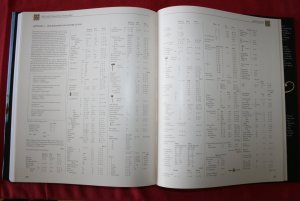
The Title:
"The Restoration Warship - design, construction and career of a Third Rate of Charles II´s Navy"
by R. Endsor

- Hardcover: 244 pages
- Publisher: Conway Maritime Press, 2009
- Language: English
- Product Dimensions: 10.2 x 1.2 x 12.2 inches
- Shipping Weight: 3.5 pounds
The Restoration Warship is a comprehensive history of the Lenox, a 70-gun third rate of Charles II's Navy, illustrated with my own plans, paintings and sketches. Lenox represents the pinnacle of English shipbuilding practice and in many ways typifies all third-rate ships of the period. They were by far the most numerous class of warship in the seventeenth century and formed the backbone of the English fleet. Lenox was ordered as the first of the King's ‘Thirty Ships’ building programme, a series of beautiful and powerful warships that were intended to reflect the glory and majesty of the monarch. Their graceful lines and ornate decoration made these ships ideal subjects for study, drawings of which were made by the famous artists the Van de Veldes, the fathers of the English marine painting genre. Unsurprisingly, the ships remain a source of fascination for historians and ship modellers today. They were constructed at the end of the Anglo-Dutch Wars and midway through Louis XIV's massive expansion programme for the French Navy. I have employed extensive primary research to produce a detailed building and career history of this vessel. Every aspect of Lenox is covered in great detail, from initial design and construction to armament, fitting out and her later career. The book provides a broad picture of the day-to-day workings of Deptford dockyard, including the techniques, trade and tools of the shipwrights, sail-makers and boat builders. It also gives an insight into the workings of naval administration, as well as including social history from the accounts of the people involved with Lenox. Construction of Lenox and her sisters was largely down to Samuel Pepys, the famous diarist and Secretary of the Admiralty, who considered the Thirty Ships programme to be ‘the greatest achievement of my career’.
The book is exceptionally well illustrated with good fold out plans of the ship, deck by deck, and diagrams of every aspect of her fittings.
There are many new drawings of the good quality throughout the book. Of particular interest to model makers (and any enthusiast of this period), are the detailed 1:72nd scale drawings of all decks (top views), side profile, side profile showing decks, body lines and, something I was reading later by another review,
the main draught lines located on the inner face of the book sleeve/jacket - again in 1:72 scale.
There are two fold out sections for the hull and deck views.
The most technical part of the book is the chapter devoted to building Lenox. The author takes the reader through the process as it happens rather than simply recording how the timbers were put together. For non technical people there are lavish and ample illustrations explaining how this was done.
The price asked is not an unreasonable one for such a beautiful volume.
For me this book is realy recommended, especially if you are interested in this period of ship building.
Award:
The Mountbatten Maritime Award for Best Literary Contribution 2010 was held in London on Thursday 28th October at the Institute of Directors, Richard was awarded a Certificate of Merit for the best illustrated book.
Contents:
Foreword and Introduction
Chapter I - Perliamentary Approval (page 9 to 16)
Chapter II - Deptford Dockyard and Timber Supplies ( page 17 to 30)
Chapter III - Building the Lenox (page 31 to 70)
Chapter IV - Carvings and Finishing (page 71 to 76)
Chapter V - Ship´s boats (page 77 to 78)
Chapter VI -
 s (page 79 to 80)
s (page 79 to 80)Chapter VII - Launching (page 81 to 99)
Chapter VIII - Shipwright Productivity (page 100 to 114)
Chapter IX - Sails and Rigging (page 115 to 124)
Chapter X - Laid up in Ordinary (page 125 to 146)
Chapter XI - Ordnance (page 147 to 178)
Chapter XII - Service History (page 179 to 224
Appendices, Visual Clossarym Index (page 225 to 256)
Drawings:
The drawings in scale 1:72 are fixed in the book for fold out, they are good, partly very good, but it is not like a detailed planset.
Nevertheless I found out, that R. Endsor is selling additional drawings directly via his web-page, and the in scale 1:48, which is for some modelers maybe more interesting than the 1:72. This is maybe also interesting for an interested modeler........check it out
He is writing:
Due to popular demand, I now supply separate drawings on paper of the 70-gun warship Lenox at a scale of 1/4" to the foot or 1/48, the same scale of the original draughts and most of the surviving Navy Board models. At that scale, the length of the ship from the head to taffrail is 44 inches (112cm).
I supply the following drawings at £10 each plus one-off payment £8 postage within the U.K or $15 each, plus $19 postage for all the plans you order to the USA in a cardboard tube. Payment is most easily made through Paypal. For any other destinations, please contact me for a quote.
- Construction lines, sheer and body plan as on reverse of dust jacket and title page
- Orlop plan, page 88-90
- Longitudinal section, page 91-94
- Gundeck plan, page 95-97
- Quarterdeck, midship section and bulkheads, page 98-99
- Upperdeck plan, page 168-170
- Broadside view, page 171-174
- Topside plan, page 175-177
http://www.richardendsor.co.uk/home/4539578529
Excerpts from the book:












Appendices like "Principle Dimensions", "Scantling list", "Building contract of the Yarmouth", "The building list of the Lenox" and several others




